Audition: Hearing ( Exam 3 )
0.0(0)
0.0(0)
Card Sorting
1/44
Earn XP
Description and Tags
Study Analytics
Name | Mastery | Learn | Test | Matching | Spaced |
|---|
No study sessions yet.
45 Terms
1
New cards
Sound
air pressures variations over time
- high to low pressure
- speed ~ 760 mph (light = 670,000,000 mph)
- high to low pressure
- speed ~ 760 mph (light = 670,000,000 mph)
2
New cards
thunder and lightning
a loud crashing noise heard after lightning
- a great example of the properties of sound and light
- a great example of the properties of sound and light

3
New cards
Frequency
cycles per second
- measure: Hertz (Hz)
- pitch
- humans: 20 to 20,000
- measure: Hertz (Hz)
- pitch
- humans: 20 to 20,000
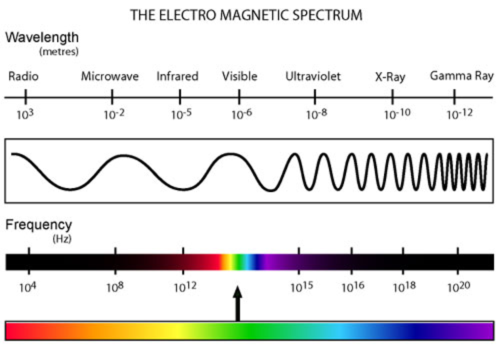
4
New cards
Amplitude
pressure wave height
- loudness
- measure: decibels (dB)
- loudness
- measure: decibels (dB)
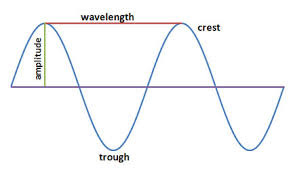
5
New cards
Ear Structures
outer ear, middle ear, inner ear
6
New cards
Outer Ear
- directs sound into the ear for processing
- Pinna (auricle)
External Auditory Canal
- Pinna (auricle)
External Auditory Canal
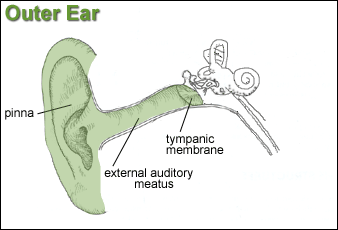
7
New cards
external auditory canal
The ear canal; leads to the tympanic membrane.
8
New cards
tympanic membrane (eardrum)
vibrates in response to sound waves
- seals middle ear
- seals middle ear
9
New cards
Microtia
abnormally small pinna
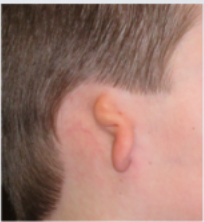
10
New cards
Anotia
absence of pinna
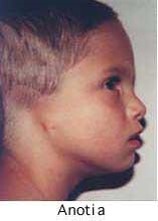
11
New cards
aural atresia
congenital absence of the external auditory canal
12
New cards
Auricular Hematoma (Cauliflower Ear)
a compress or shearing injury that causes subcutaneous bleeding. to prevent wear protective head gear. most common in wrestling
13
New cards
Middle Ear
- amplification of sound (for air to fluid shift)
- 3 Ossicle bones
- Eustachian Tube
- Muscles
- 3 Ossicle bones
- Eustachian Tube
- Muscles

14
New cards
ossicles of middle ear
malleus (hammer; attached to eardrum)
incus (anvil)
stapes (stirrup; attached to oval window)
incus (anvil)
stapes (stirrup; attached to oval window)
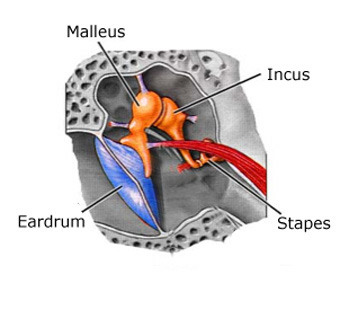
15
New cards
Eustachian tube
A narrow tube between the middle ear and the throat that serves to equalize pressure on both sides of the eardrum
- maintains balance of air pressure in middle ear
- outer and middle ear must have same pressure for optimal hearing
- drainage system for infections
- maintains balance of air pressure in middle ear
- outer and middle ear must have same pressure for optimal hearing
- drainage system for infections
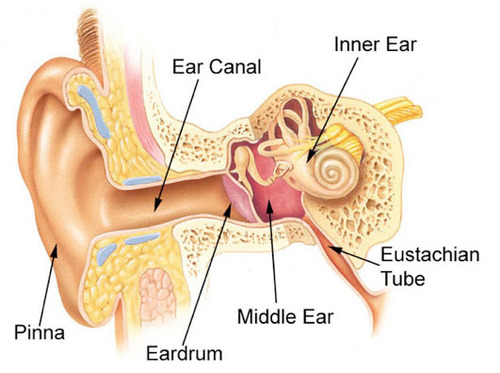
16
New cards
Muscles of the middle ear
tensor tympani and stapedius
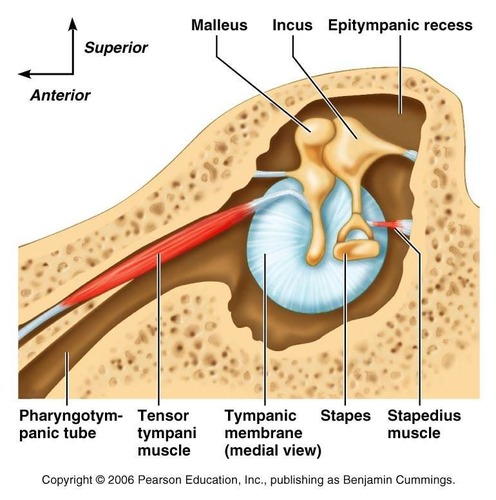
17
New cards
tensor tympani
the muscle attached to the malleus; tensing the tensor tympani decreases vibration
18
New cards
stapedius
the muscle attached to the stapes; tensing the stapedius decreases vibration
19
New cards
otosclerosis
hardening of the bony tissue of the middle ear
- stapes can no longer move
- lose ability to hear low frequencies
- Treatment: Hearing aid, stapes replacement (stapedectomy)
- stapes can no longer move
- lose ability to hear low frequencies
- Treatment: Hearing aid, stapes replacement (stapedectomy)
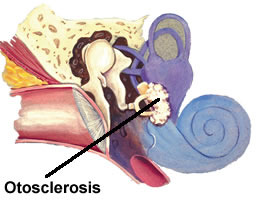
20
New cards
Hearing Aids
- amplify sound
- newer, digital aids are programmable
- adaptable to individual's needs (e.g, particular frequencies in need of boost)
- effective for those with cochlear function
- newer, digital aids are programmable
- adaptable to individual's needs (e.g, particular frequencies in need of boost)
- effective for those with cochlear function
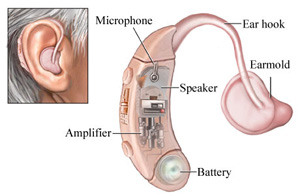
21
New cards
Inner Ear
- fluid-filled
- Structure: Cochlea ("snail")
a. oval window
b. round window
c. Basilar Membrane
- Structure: Cochlea ("snail")
a. oval window
b. round window
c. Basilar Membrane
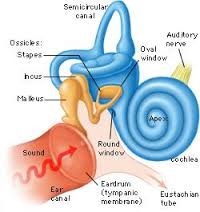
22
New cards
oval window
the membrane that separates the middle ear from the inner ear (end of cochlea)
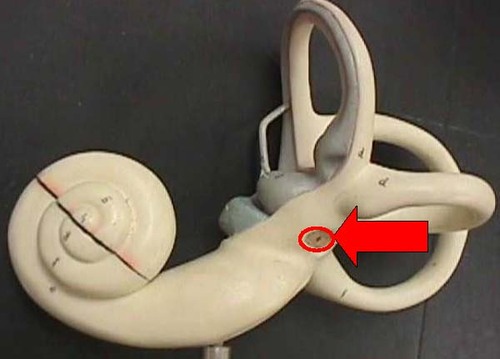
23
New cards
round window
other end of cochlea, moves opposite the oval window
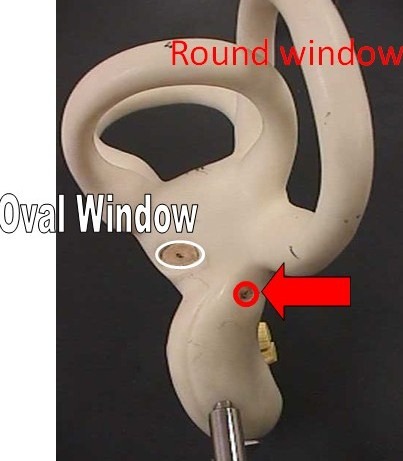
24
New cards
basilar membrane
- surface moves in a wave-like fashion
- near oval window it is narrow and more rigid
- becomes wider and more flexible farther into cochlea
- structure determines location/max. frequency relationship
- near oval window it is narrow and more rigid
- becomes wider and more flexible farther into cochlea
- structure determines location/max. frequency relationship
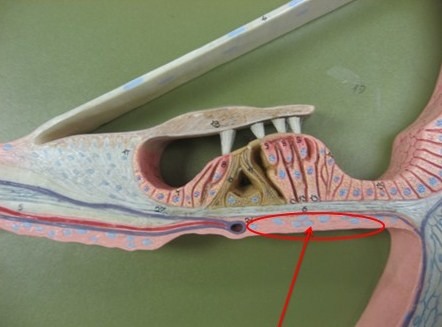
25
New cards
Organ of Corti
Center part of the cochlea, containing hair cells, canals, and membranes
- site of transduction
- hair cells contact tectorial membrane
- causes depolarization of cell, and signal
- peak of wave= strongest signal, information about sound
- site of transduction
- hair cells contact tectorial membrane
- causes depolarization of cell, and signal
- peak of wave= strongest signal, information about sound
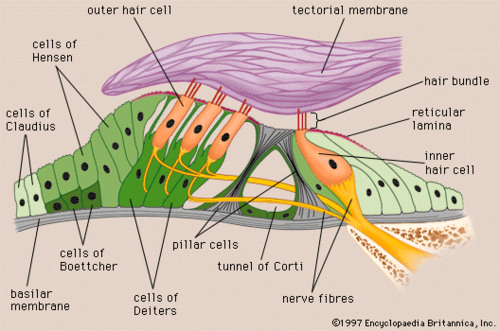
26
New cards
presbycusis
age-related hearing loss
- damage to hair cells in Organ of Corti
- damage begins closer to oval window (high frequencies lost)
- damage to hair cells in Organ of Corti
- damage begins closer to oval window (high frequencies lost)
27
New cards
tinnitus
ringing or buzzing in the ears
- signal from cochlea without external stimulus
- "phantom sounds"
- not well understood (cause, treatment)
- signal from cochlea without external stimulus
- "phantom sounds"
- not well understood (cause, treatment)
28
New cards
Cochlear Implant
- for those with no cochlear function
- external sound processor and transmitter (attached to side of head)
- internal receiver and electronic "cochlea"
- must learn to interpret these "sounds"
- not like typical hearing
- external sound processor and transmitter (attached to side of head)
- internal receiver and electronic "cochlea"
- must learn to interpret these "sounds"
- not like typical hearing
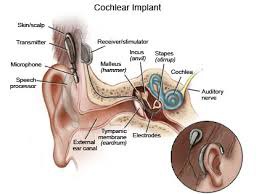
29
New cards
Newborn Screening Test
- for congenital hearing loss
30
New cards
Otoacoustic Emissions Test (OAEs)
-measure sound coming out of the ear; reflecting off internal structures
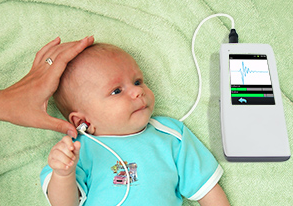
31
New cards
Auditory pathway to the brain
Cochlea output = auditory nerve
- 3 (pre-thalamus) nuclei
1. cochlear nucleus
2. Superior Olivary Complex
3. Inferior Colliculus
4. must processing occurs at these basic levels (much more so than in vision)
c) Medial Geniculate Nucleus (of thalamus)
d) projected to Primary Auditory Cortex (in temporal lobe)
- 3 (pre-thalamus) nuclei
1. cochlear nucleus
2. Superior Olivary Complex
3. Inferior Colliculus
4. must processing occurs at these basic levels (much more so than in vision)
c) Medial Geniculate Nucleus (of thalamus)
d) projected to Primary Auditory Cortex (in temporal lobe)
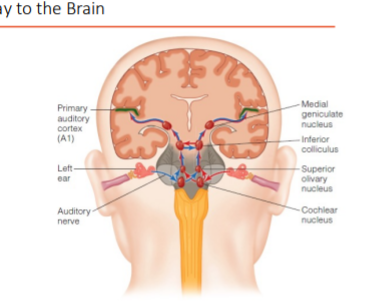
32
New cards
superior olivary complex
a structure in the brain stem (one on each side of the brain); a stop on the ascending auditory pathway receiving signals from both cochlear nuclei
33
New cards
Inferior Colliculus
a midbrain nucleus in the auditory pathway
(eye movement)
(eye movement)
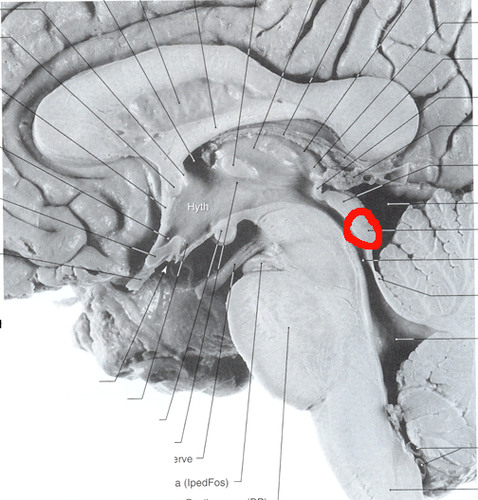
34
New cards
medial geniculate nucleus (MGN)
the part of the thalamus that relays auditory signals to the temporal cortex and receives input from the auditory cortex
35
New cards
Cortical Processing
1. areas in brain respond differentially to particular frequencies
2. similar to basilar membrane mapping
b) most frequency information is place coded
c) low frequencies are partially temporally coded (phase locking; cells working as groups)
2. similar to basilar membrane mapping
b) most frequency information is place coded
c) low frequencies are partially temporally coded (phase locking; cells working as groups)
36
New cards
tonotopic mapping
The coding of frequency to a specific place along the basilar membrane
37
New cards
phase locking
Firing of auditory neurons in synchrony with the phase of an auditory stimulus.
38
New cards
sound localization
determining the location of the source of sound
- similar to depth perception
- monaural cues vs. binaural cues
- similar to depth perception
- monaural cues vs. binaural cues
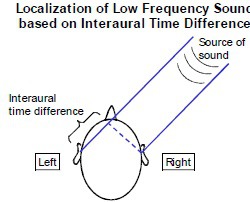
39
New cards
Monaural cues (one ear)
Pinna-based
- particular shape of pinna determines frequency analysis
- sounds from different locations = different patterns
- most effective for sound elevation changes
- particular shape of pinna determines frequency analysis
- sounds from different locations = different patterns
- most effective for sound elevation changes
40
New cards
binaural cues
cues sound location that requires both ears
- Interaural Time Difference (ITD; left/right primarily)
- Interaural Intensity Difference (IID; best for high frequencies)
- Interaural Time Difference (ITD; left/right primarily)
- Interaural Intensity Difference (IID; best for high frequencies)
41
New cards
interaural time difference (ITD)
the difference in arrival time of the same sound at the two ears
42
New cards
Interaural Intensity Difference (IID)
the difference between signal intensity levels at each ear
43
New cards
Echolocation
produce sound and code echoes of sound off objects

44
New cards
Echolocation in bats
1. uniquely shaped, movable pinnae
2. mammalian auditory system (similar structurally to humans)
3. sounds produced from vocal tract (e.g., larynx, tongue; 20,000+ Hz)
4. Echolocation behaviors
a. head movements to sample environment
b. pulse frequency varies (e.g., speeds up when nearing target)
used to guide movement, identify obstacles, and find food
2. mammalian auditory system (similar structurally to humans)
3. sounds produced from vocal tract (e.g., larynx, tongue; 20,000+ Hz)
4. Echolocation behaviors
a. head movements to sample environment
b. pulse frequency varies (e.g., speeds up when nearing target)
used to guide movement, identify obstacles, and find food
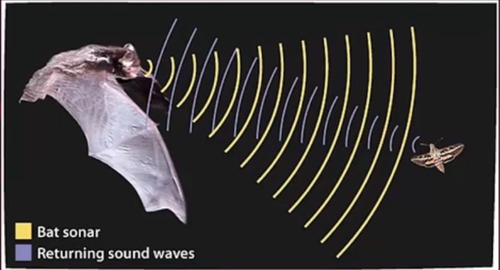
45
New cards
Can humans echolocate?
1. evidence that some people can learn to echolocate
2. most common in those who are blind
3. limited range (~2 feet)
4. likely plasticity based (e.g., early blind most likely to develop ability)
2. most common in those who are blind
3. limited range (~2 feet)
4. likely plasticity based (e.g., early blind most likely to develop ability)